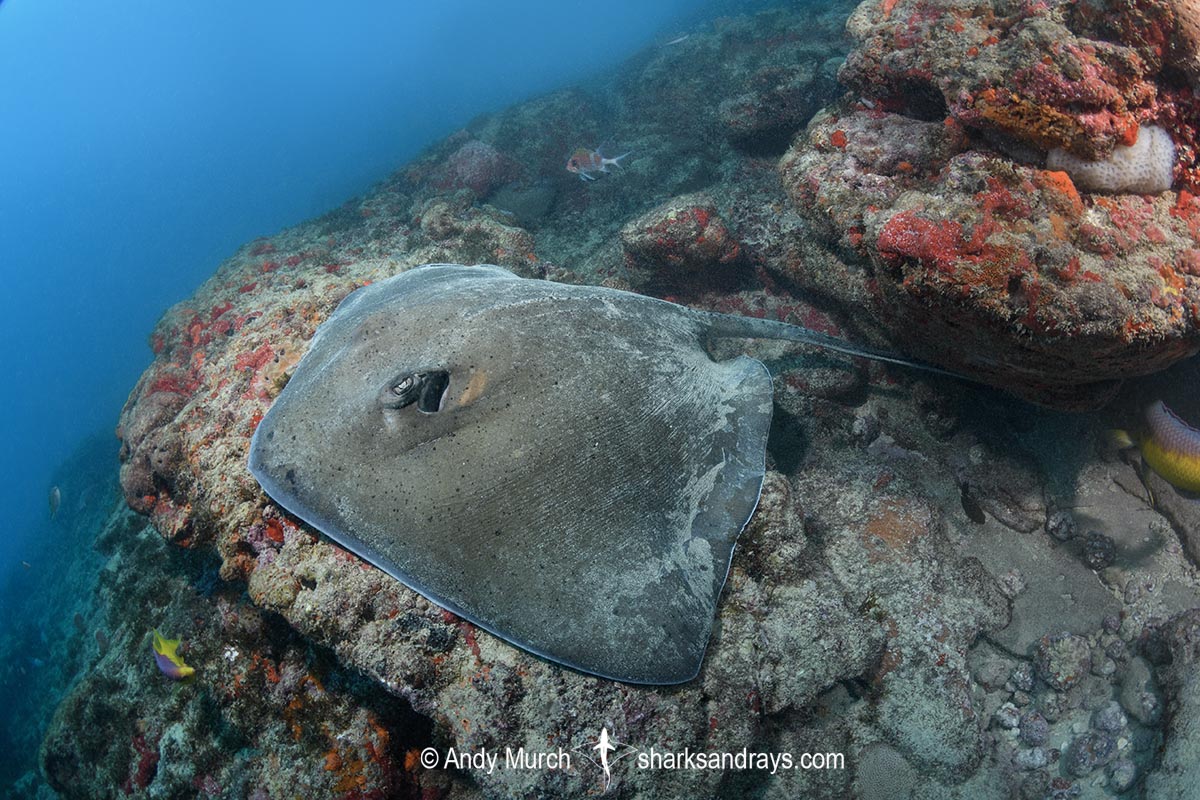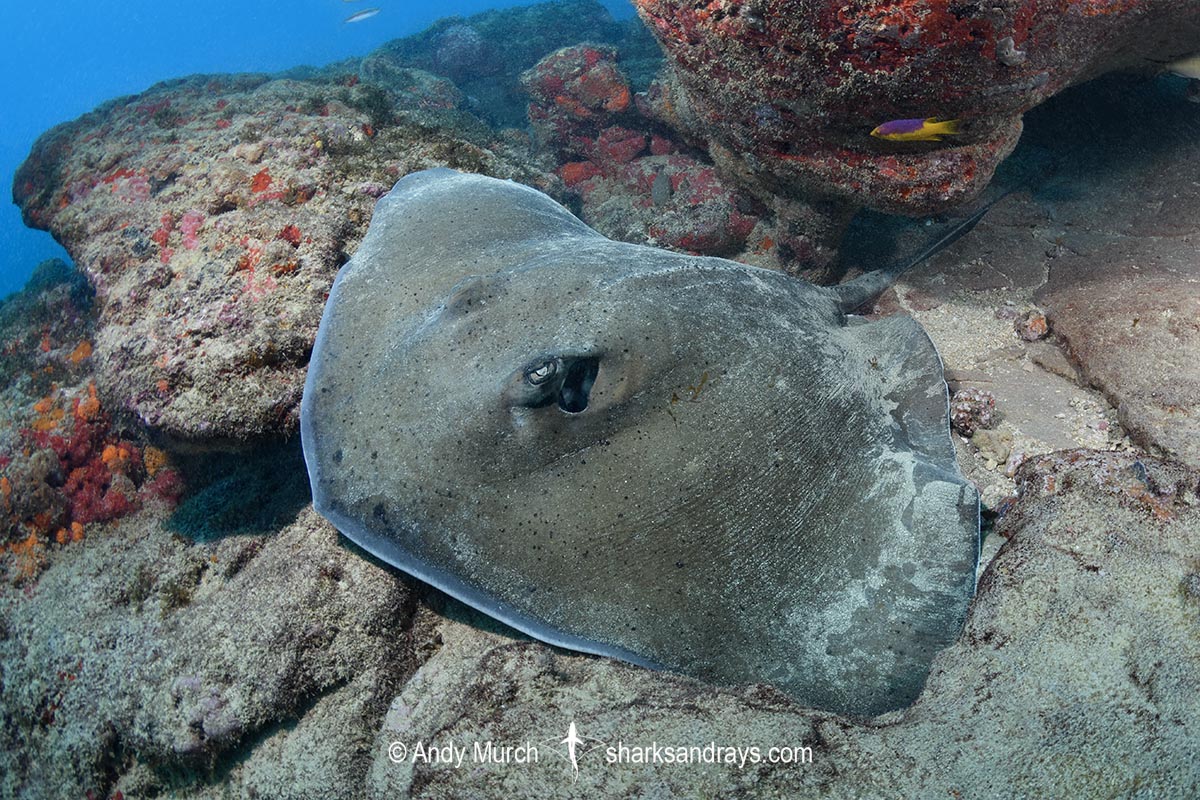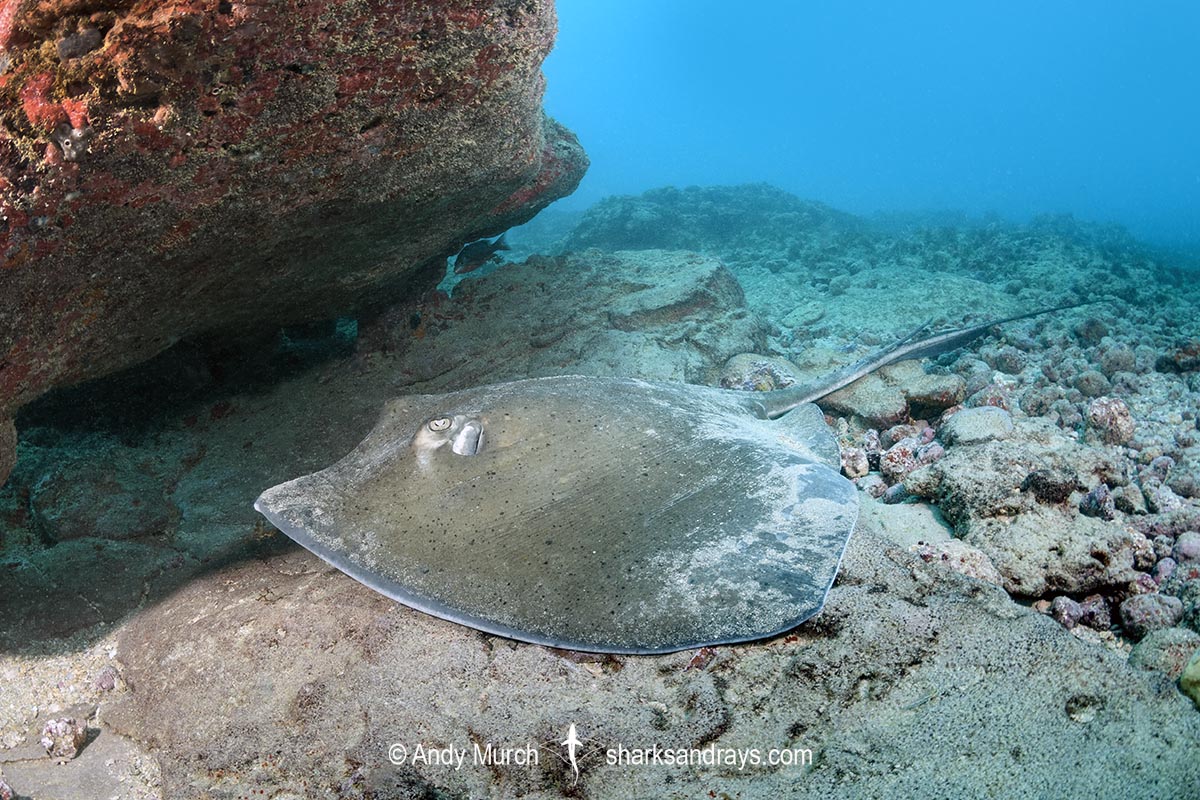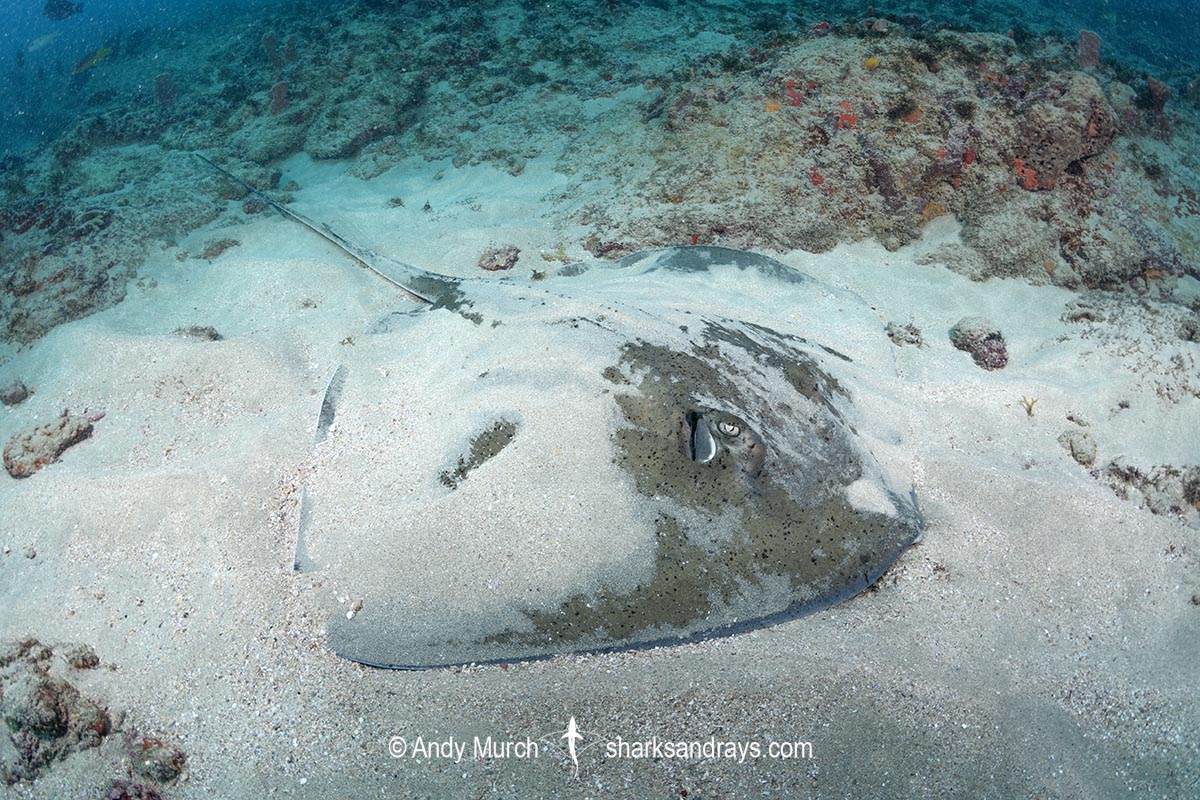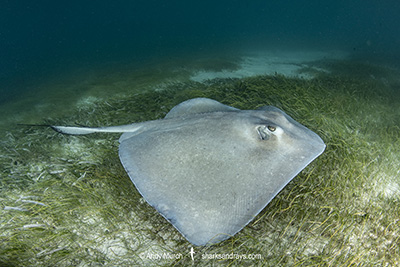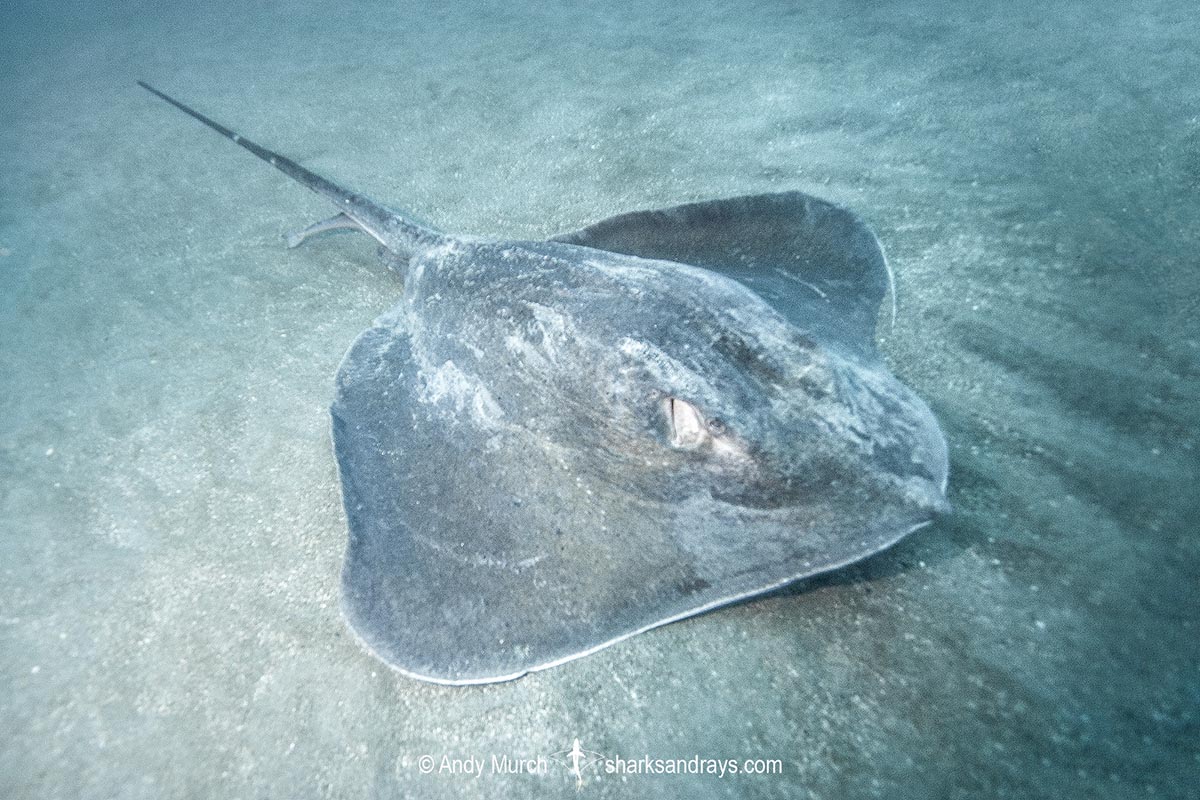Common names
Lutz’s Stingray.
Binomial
Hypanus berthalutzae
Synonyms
Pastinaca hastada, Dasybatis hastada.
Identification
A medium sized stingray with a kite-shaped disc that is slightly wider than long; disc width approximately 1.2 x length. Snout obtusely angular with a slightly protruding tip. Anterior margins of disc mildly convex. Pectoral fin apexes narrowly rounded or angular. Pelvic fins small with tightly rounded apexes.
Eyes relatively large and protruding. Snout length less than 2x combined eye and spiracle length.
Deep labial furrows around mouth. Mouth weakly arched. Lower jaw concave at symphysis. Mildly skirt shaped nasal curtain with a weakly fringed margin.
Patches of dermal denticles present between eyes and along mid-disc. A row of small thornlets extend along midline to base of tail. Short row of thornlets on each shoulder. Tail tapers gently to caudal sting, then filamentous to tip. Tail length (when intact) approximately 2.5 x disc width. Ventral finfold very long and low; depth roughly equal to tail height. Dorsal finfold usually very low. One tail sting usually present.
Colour
Dorsum grey, greyish-brown or olive-brown, often with scattered, small, black flecks. Ventrum white, usually with broad dusky margins posteriorly on pectoral and pelvic fins. Tail beyond caudal sting pale laterally, fading to solid black. Ventral and dorsal finfolds dark or black.
Size
Maximum disc width probably ~150cm.
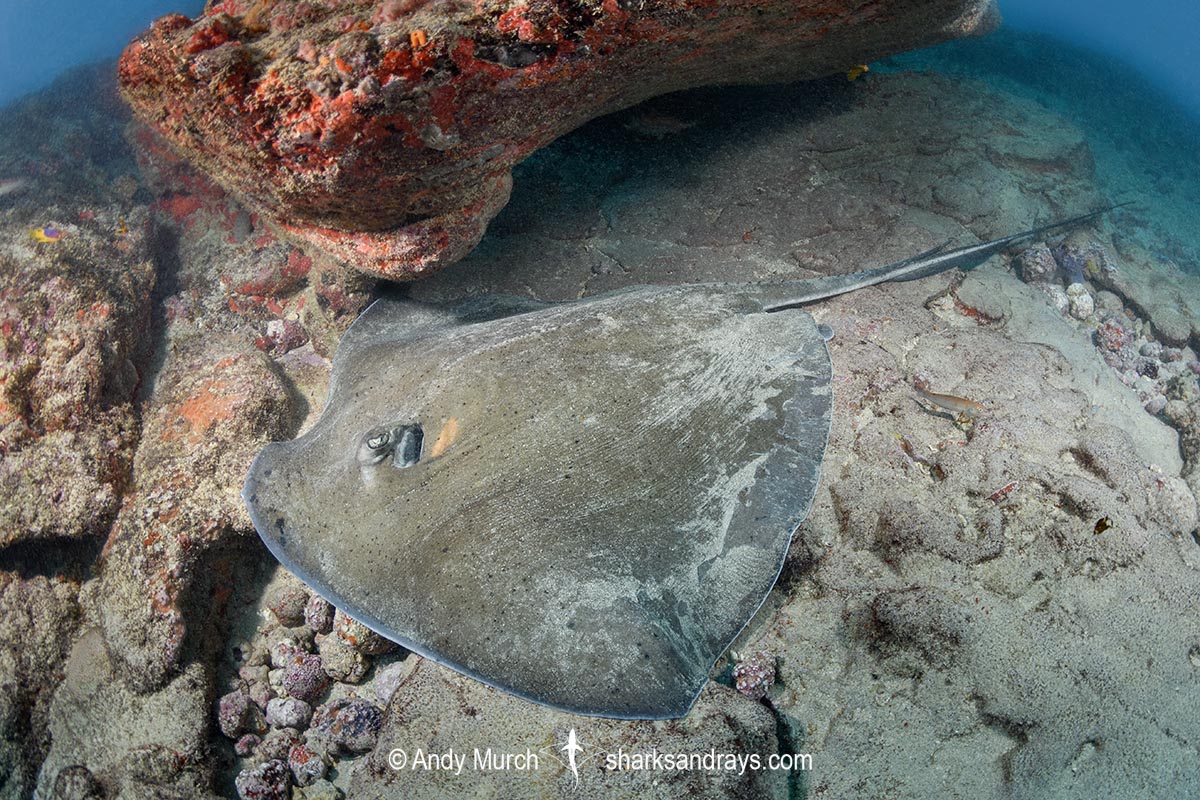
Conservation Status
VULNERABLE
Lutz’s stingray (Hypanus bertalutzae) is heavily targeted in (largely unmanaged) artisanal fisheries throughout its range. It is also a highly sought after component of commercial trawl and longline fissheries. Over the last three decades Lutz’s stingray is thought to have declined by 30-49%.
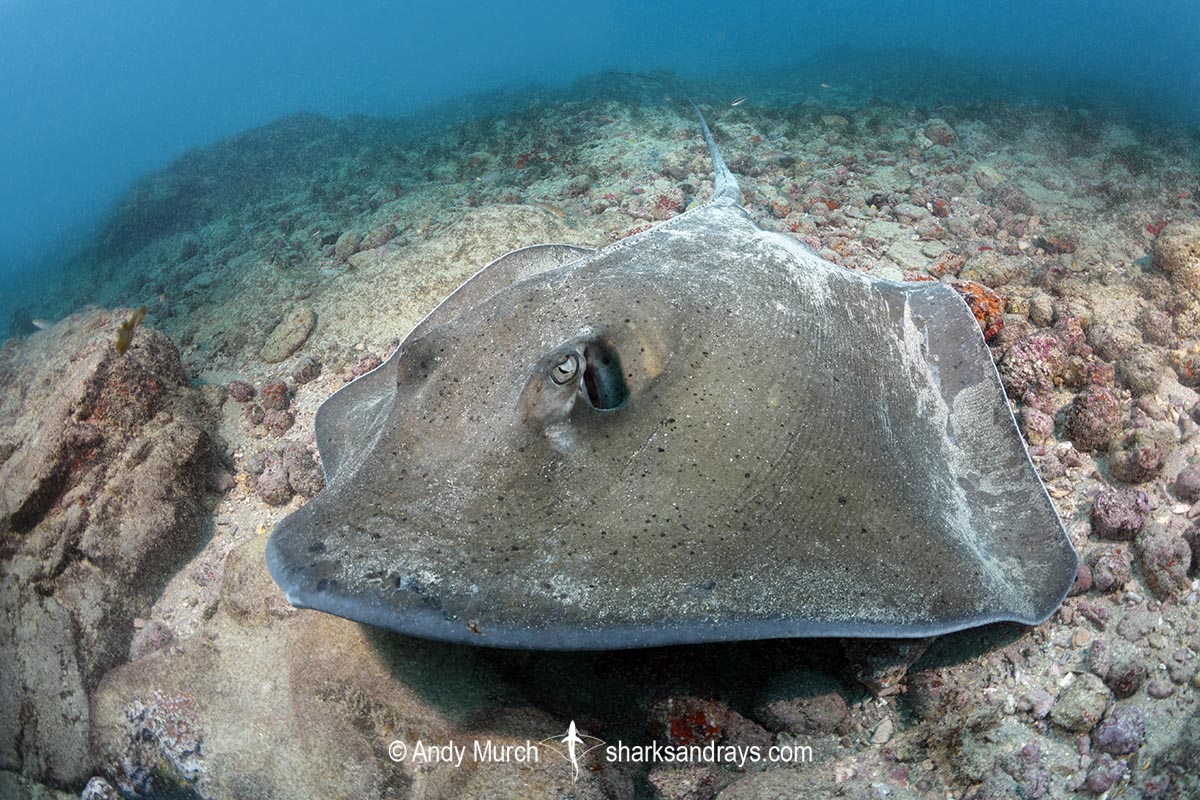
Habitat
Tropical to sub-temperate seas. On sandy substrates, sea grass beds, and areas adjacent to reefs. From shallow estuarine environments to at least 100m.
Distribution
Southwestern Atlantic Ocean. A Brazilian endemic, occurring between the Amazon River outflow and Rio Plata outflow. Also present at the archipelagos of Fernando do Roronha and Atol das Rocas.
Reproduction
Probably, matrotrophic aplacental viviparous. Litter size unknown.
Diet
Benthic invertebrates and probably small demersal fishes.
Behavior
Spends much of the day resting on the substrate. Excavates large depressions in the sand to capture invertebrates.
Reaction to divers
Easily approachable when accustomed to divers; even tolerating physical contact i.e. under the snout to encourage animals into different positions.
Diving logistics
Probably common over a wide area of the Brazilian coastline. South of Natal in Rio Grande do Norte, Lutz’s stingrays are easy to find on offshore reefs reachable by boat.
What’s new
View our full list of updates
Similar species
Southern Stingray Extremely similar, but lacking small dark flecks. Easily identified by more northerly range which starts north of the Amazon river outflow.
Roughtail Stingray Distinguished by lack of thorns on shoulders and tail densely covered in large thorns.

